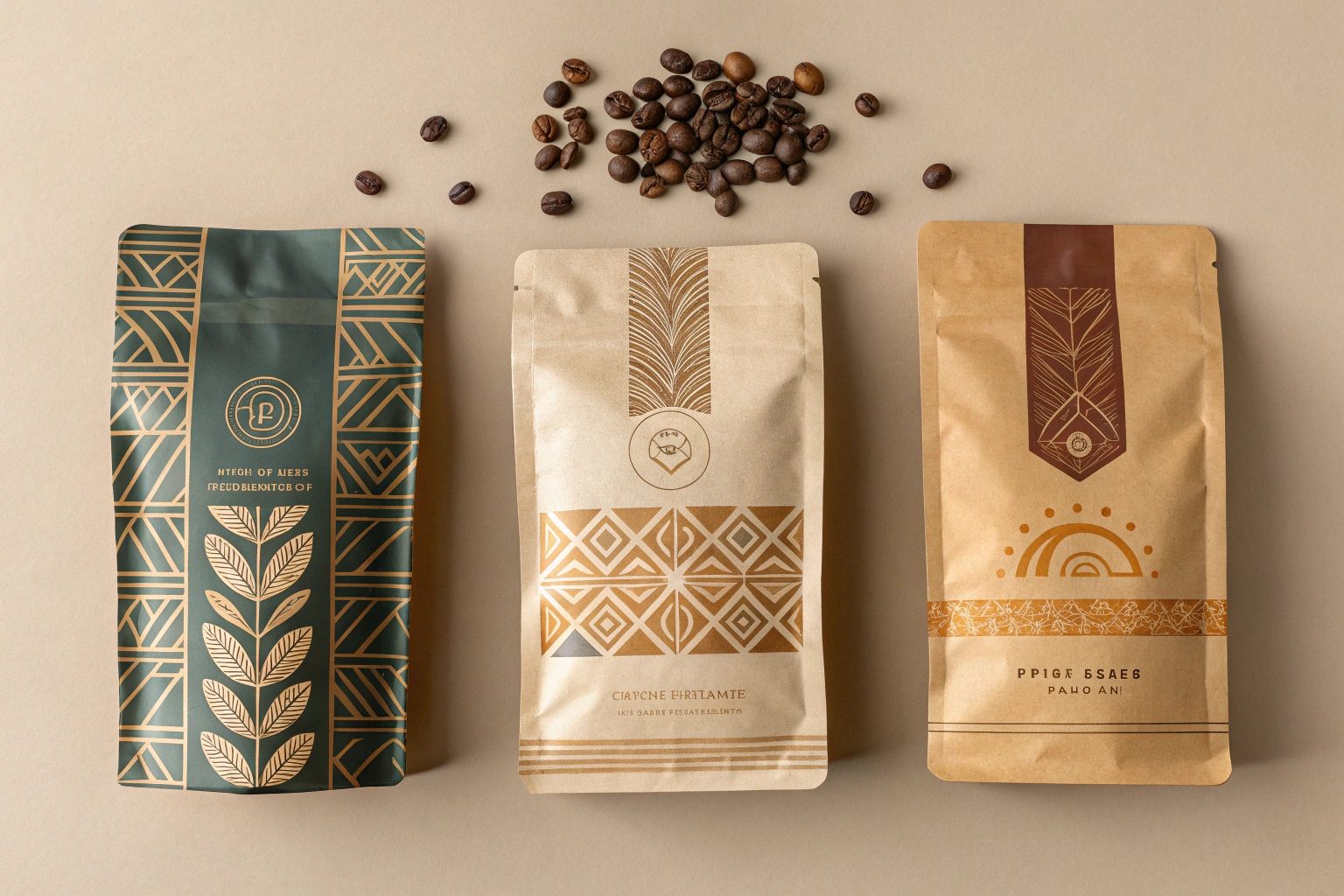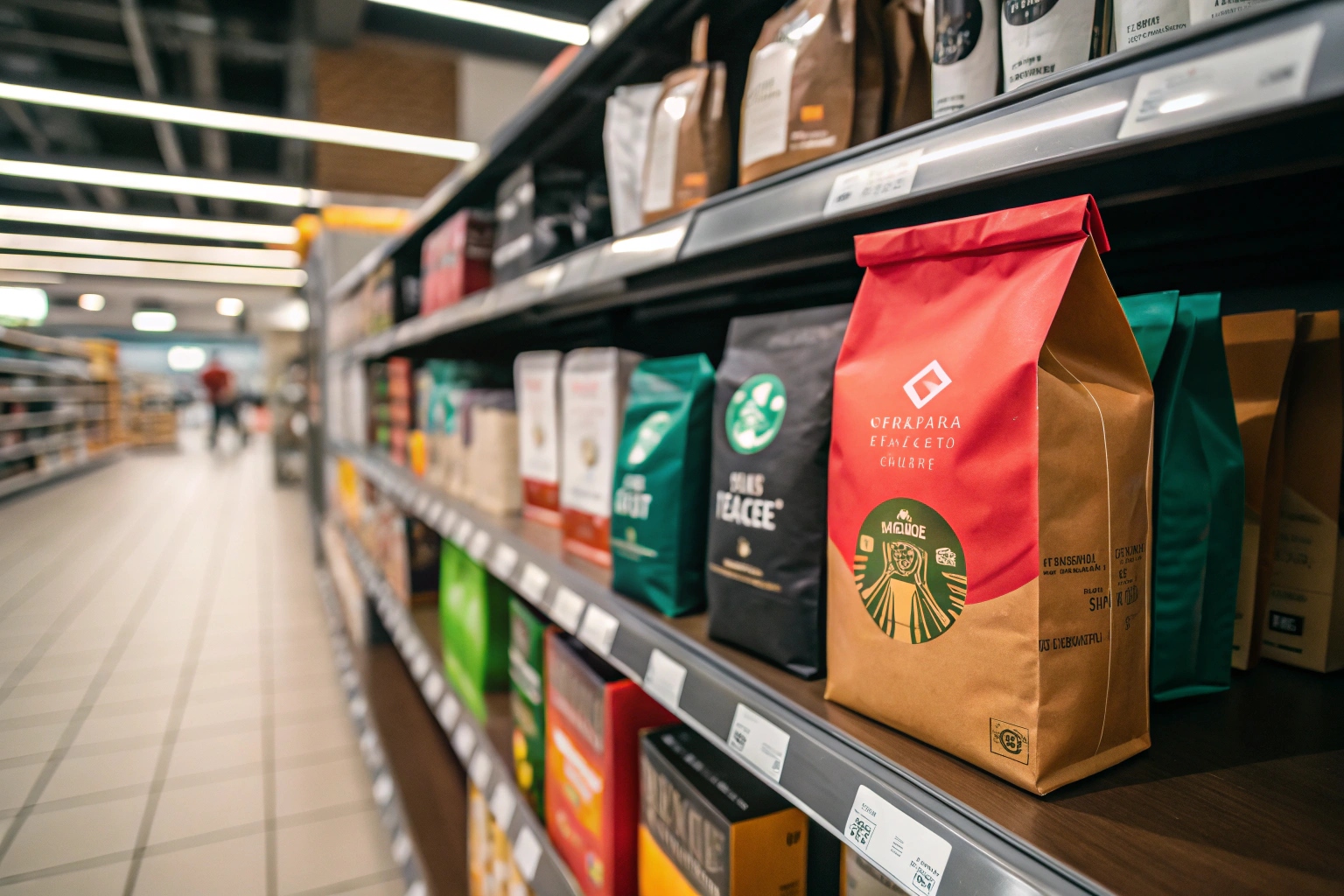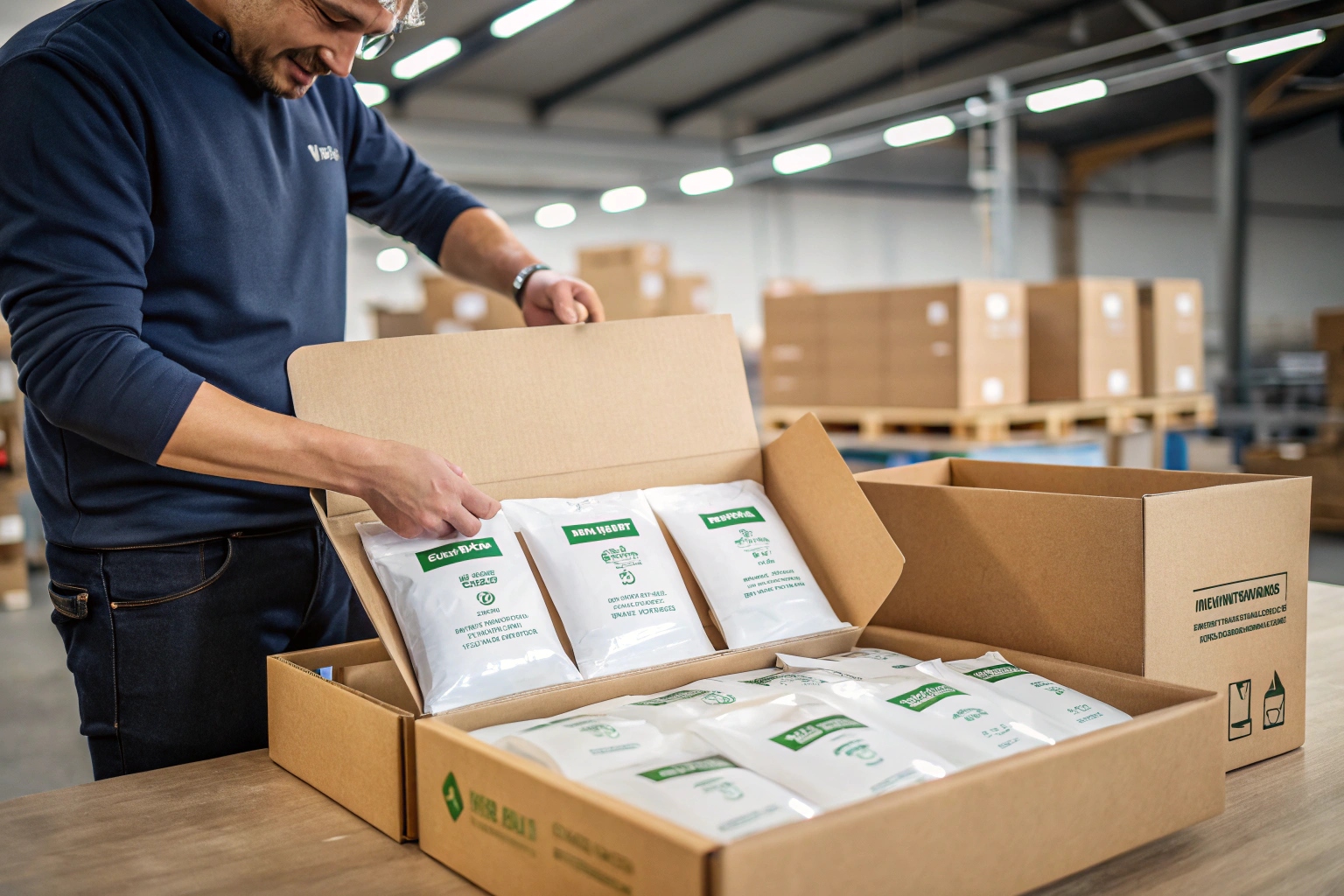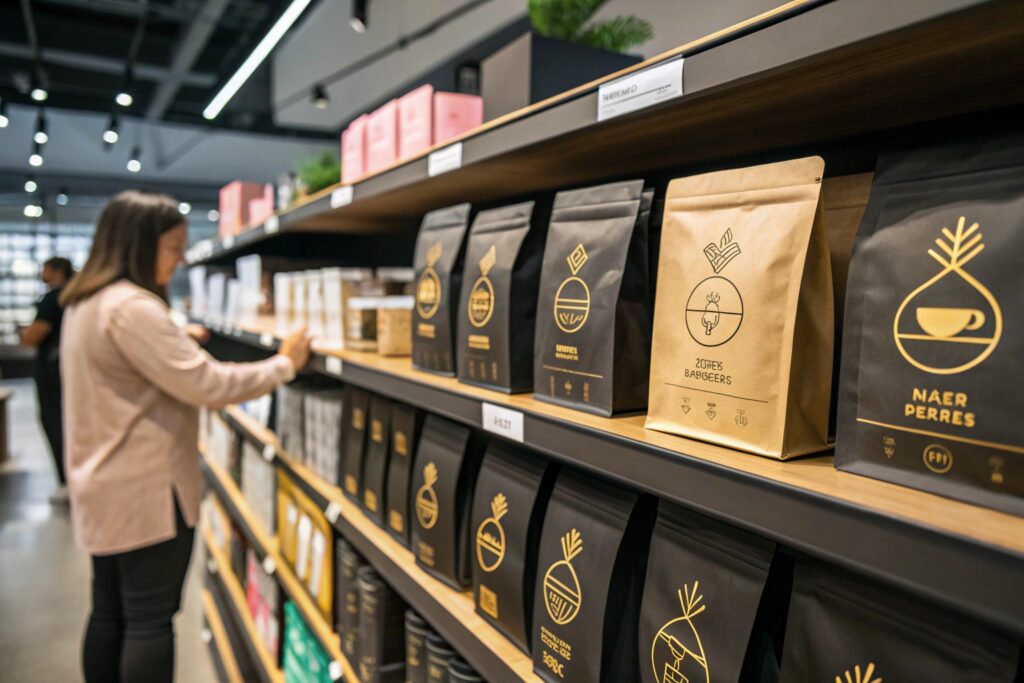Packaging is not just a wrapper — it’s your silent salesman.
Coffee packaging influences how consumers perceive quality, taste, and value — often before they read a single word.
I’ve met clients who thought they had the best beans but still struggled with sales. Once we updated their packaging, sales improved — without changing the product inside.
Why does packaging design1 affect the first impression?
Your customer decides in seconds. Most don’t even open the bag.
Colors, layout, texture, and material all send subconscious messages about your brand.
What catches the eye first?
It’s usually color. Bright colors suggest energy and freshness. Dark tones hint at richness and depth. Earthy shades like brown or beige speak to natural or organic coffee.
Next comes shape and structure. Stand-up pouches with a flat bottom feel premium. Matte finishes feel artisanal. Glossy bags look modern. Fonts, logo size, and visual hierarchy2 all tell a story.
| Element | Impression Given |
|---|---|
| Matte finish | Premium, hand-crafted |
| Glossy finish | Modern, bold |
| Kraft paper look | Natural, eco-friendly |
| Bold typography | Confident, trendy |
| Minimal design | Clean, high-end |
How design aligns with positioning
For example, if you sell organic coffee, packaging should look eco-conscious. Use recyclable film, soft earthy colors, and simple fonts. If you target Gen Z with cold brew, go vibrant and bold with resealable zipper pouches.
Does packaging affect perceived quality3?
Many consumers equate packaging with product value.
A premium-looking bag makes coffee seem fresher, better roasted, and worth more — even before the first sip.

Dive deeper: How this works in practice
I had a client from the U.S. — Mark — who imported great beans from Vietnam. But the packaging was plain and generic. It didn’t reflect the coffee's story. We redesigned the pouch to include origin info, tasting notes, and a custom matte black finish. His retail price jumped 25%, and customers still bought more.
The psychology of touch and sound
The texture matters. A thick, structured pouch feels high-end. Thin, crinkly plastic can feel cheap. Even the sound of opening a resealable zipper leaves an impression. Every detail matters.
Real value vs. perceived value
This is where design bridges the gap. If your coffee is priced at $20 per bag, your packaging has to feel like $20. Otherwise, people hesitate — even if the beans are excellent.
Can packaging influence brand loyalty4?
People remember how a product makes them feel — including the packaging.
Consistent, thoughtful packaging design1 builds recognition and trust, which leads to repeat purchases.
How familiarity plays a role
When a customer walks into a store and spots your bag from 10 feet away, that’s loyalty. Shape, color scheme, and layout should remain consistent. Small tweaks are fine, but the core identity should stay the same.
Storytelling builds emotional connection5
Your packaging should speak — without saying much. Think about a small block of text that shares your brand's mission. Or icons that show “woman-owned” or “direct trade.” These elements invite the customer to feel like they’re part of something meaningful.
Dive deeper: The role of packaging in unboxing
Even in B2B, unboxing matters. Distributors, buyers, and retailers all interact with your packaging. A well-labeled master carton, clear expiration dates, and clean pouch layout make their job easier — and build confidence in your brand.
How do certifications and labels6 influence buying?
Badges make decisions easier. Especially for new customers.
Certifications like USDA Organic, Rainforest Alliance, or Fair Trade influence buying by signaling trust and transparency.

Why do labels matter?
Consumers don’t have time to read everything. Logos like “Organic” or “Non-GMO” act as shortcuts. They help people feel safe about their purchase. Especially in competitive markets like coffee, these icons add credibility.
Dive deeper: Trust vs. Skepticism
However, fake certifications or unclear claims can backfire. Some of my clients used “eco-friendly” icons without proper backing. Buyers noticed — and trust dropped. That’s why we help verify every claim before printing.
Which certifications matter most?
| Label | Trusted By | Impact |
|---|---|---|
| USDA Organic | U.S. Buyers | High |
| EU Organic | European Buyers | High |
| Rainforest Alliance | Global | Moderate |
| Fair Trade | Ethical Buyers | High |
| Biodegradable / Compostable Icons | Eco-conscious Market | Growing |
Adding these to your pouch — when backed by truth — boosts perceived value instantly.
How do functionality and convenience influence buying?
Packaging isn’t just about looks — it has to work.
Functional elements like zippers, one-way valves, and easy-open notches enhance user experience7 and drive repeat purchases.

Dive deeper: What do buyers want?
For whole bean coffee, a one-way valve is a must. For ground coffee, a zipper becomes more important. For samples or travel packs, a small tear-notch with a simple seal is ideal.
What happens when packaging frustrates users?
They remember. And not in a good way. Bags that don’t reseal properly, pouches that tear unevenly, or labels that smudge — all of these annoy customers. And annoyed customers don’t come back.
Functionality checklist
| Feature | Use Case | Buyer Value |
|---|---|---|
| One-way valve | Fresh roast beans | Keeps beans fresh |
| Zipper | Everyday use | Reseal after use |
| Tear-notch | On-the-go packs | Easy access |
| Transparent window | Gifting, samples | See the beans inside |
Functional packaging builds trust — silently, but powerfully.
Conclusion
Great packaging turns good coffee into a brand customers love.
-
Discover the psychological effects of packaging design on consumer choices. ↩ ↩
-
Learn how visual hierarchy can guide consumer attention and improve product appeal. ↩
-
Understanding perceived quality can help you enhance your product's market appeal. ↩
-
Learn how effective packaging can foster brand loyalty and repeat purchases. ↩
-
Understand the importance of storytelling in packaging for building customer relationships. ↩
-
Find out how certifications can enhance trust and influence purchasing behavior. ↩
-
Explore the impact of packaging on the overall user experience and satisfaction. ↩


